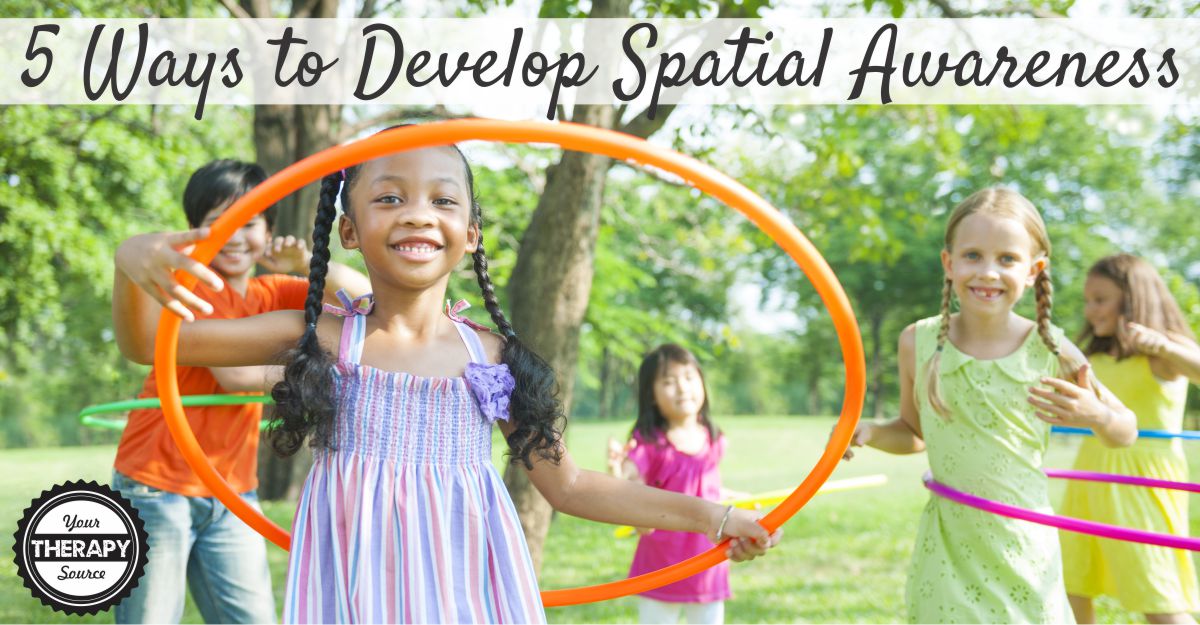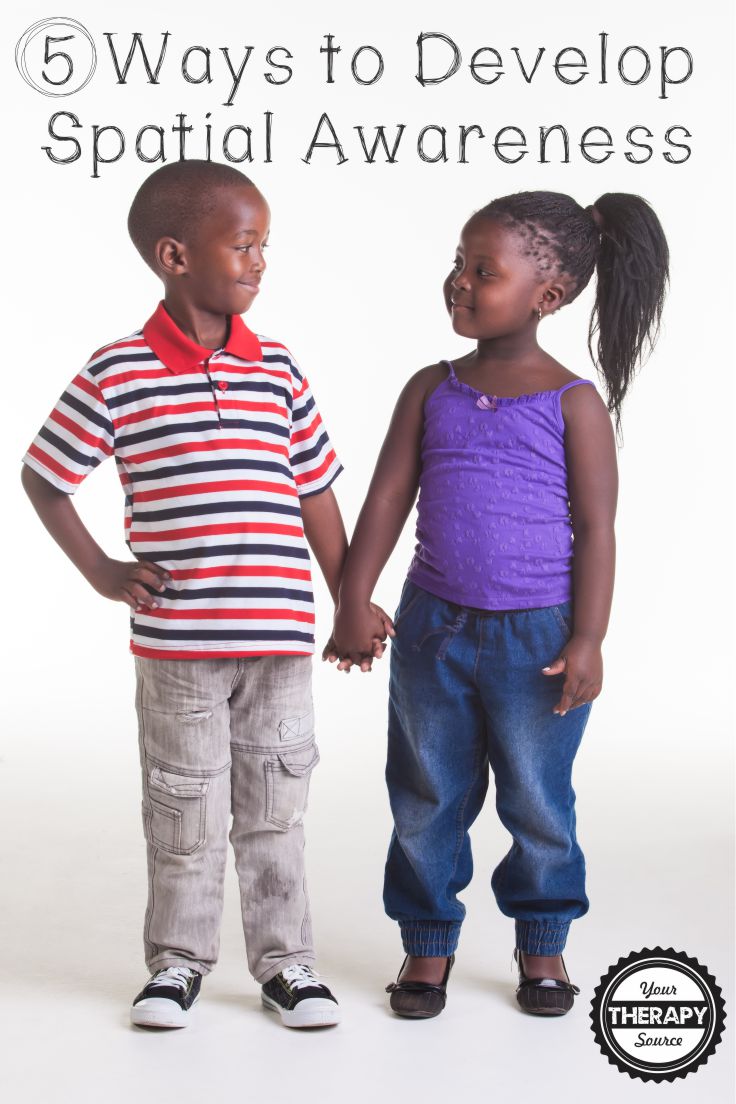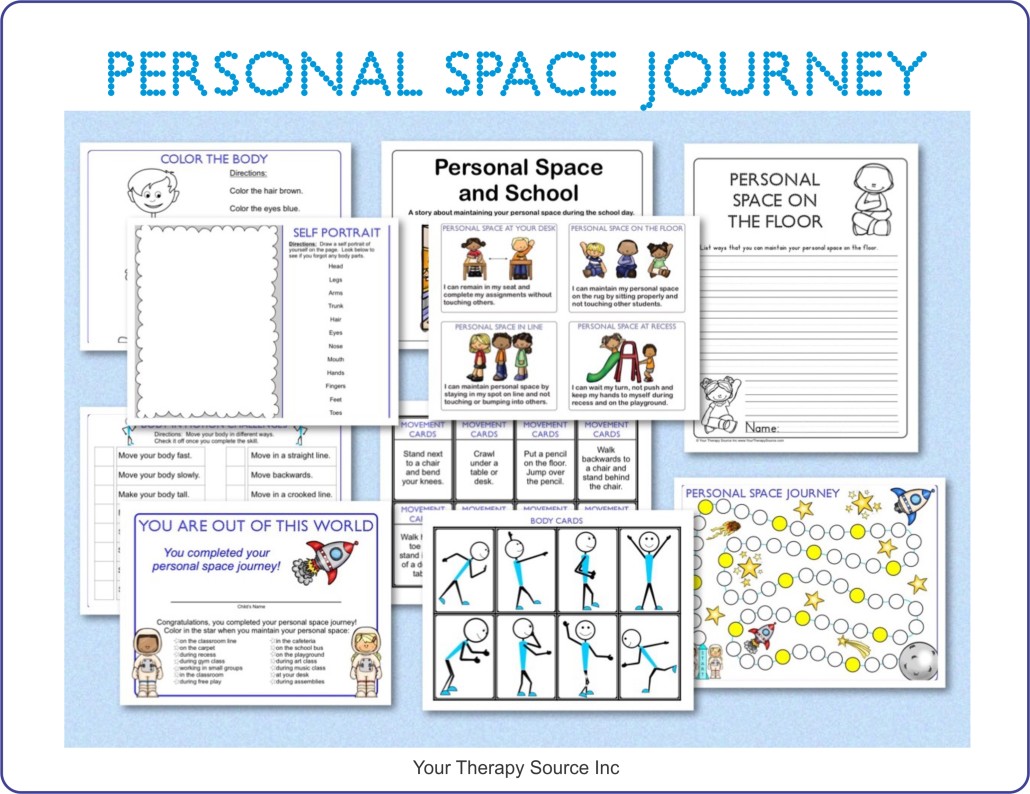5 Ways to Develop Spatial Awareness

Spatial awareness is the ability to understand and interact with the environment around you.
Whether it be avoiding obstacles when walking, reaching out to grab a pencil or determining left from right these are all examples of tasks that require spatial awareness.
Developing the skills to express and understand spatial skills are the first step in understanding spatial ability and awareness such as math skills, visual perceptual skills, and body awareness.
Here are 5 activities to help encourage the development of spatial awareness:
1. Obstacle Courses: The ability to negotiate an obstacle course requires a significant amount of spatial awareness. Vary the courses grading them according to the child’s ability to move over, under and around objects.
2. Build and Create: Use Legos, blocks, and puzzles. Try Tangam puzzles. Try this free visual spatial puzzle crossing paths. Research has shown that parents who participated in guided block play with their children had significantly higher proportions of spatial talk. Guided block play consisted of playing with the blocks along with guided instructions for how to build different structures. Read more in a previous blog post on block play and spatial awareness.
3. Practice completing patterns. You could try Follow the Path or Patterns, Patterns, Patterns.
4. Movement Games: Participate in any type of movement games where children have to move around obstacles or friends. The ability to move around stationary objects is quite different than around moving objects which are unpredictable. If you need ideas, try 50 Sensory Motor Activities for Kids! Check out Which Way? to challenge motor planning and spatial awareness or Right or Left Games to practice right and left discrimination skills.
5. Provide verbal descriptions. Offer many opportunities for children to hear descriptions of where they are or where objects are in relationship to each other. For example – “The pencil is on the right side of the desk” or “Let’s step over the log”. Play games that require children to follow directions – ie Be A Robot. Try worksheets where children how to follow directions of what colors to use for different letters or shapes ie Color Coding.
Personal Space Journey is a collection of activities to teach children about personal space. You can choose how to utilize the materials. Some children may benefit from reading the story first with follow up. Others may need to work on body awareness activities in order to maintain personal space.
This collection includes the following:
- Personal Space Journey Board Game
- 24 Body Cards – the child has to make his/her body look exactly like the body on the card
- 24 Challenge Cards – complete the body awareness and motor planning challenges written on each card
- 16 Movement Cards – complete the movement cards to practice body awareness moving through space
- Body in Motion Challenges Worksheet – try to complete the 16 motor skills moving your body in different ways
- Self Portrait – practice drawing a self-portrait and remember to include many body parts
- Color the Body – identify and color in various body parts
- Personal Space Journey Letter for Home – letter written to parents about developing body awareness
- Personal Space and School – a 12-page social story about maintaining personal space in school
- “I Can” Statement Posters to complement the Personal Space social story – 12 “I Can” posters to hang throughout the school to reinforce the personal space journey
- Twelve Small cards of the “I Can” Statements – provide the child with these small cards to remind them to maintain personal space in different situations – i.e. tape to a desk, slip in a notebook, etc.
- Personal Space Journey Certificate – complete this certificate when child has mastered maintaining personal space
- Handwriting Practice – 8 pages of handwriting practice for the child to list ways to maintain personal space in different situations. Provided in dotted line format, double line format (Handwriting Without Tears® style) and regular lined paper.
The activities are reproducible to use over and over again with all the children that you teach. FIND OUT MORE.
RELATED RESOURCES
To make gains in the area of spatial awareness, remember to build upon a child’s strengths. Read more here.
Need FREE resources to get started? Check out all of our freebies here.
Learn about the importance of body awareness when it comes to visual spatial skills here.
Read more on what are visual spatial skills and what you can do to help children develop these important skills.
Visual Spatial Reasoning Puzzle – download a free printable that challenges your students to follow the path of the red and yellow cars.
RESEARCH ON VISUAL SPATIAL AWARENESS
Did you know that early visual spatial processing skills and fine motor coordination skills predict later school performance? Read about it here .
FOSTERING VISUAL SPATIAL INTELLIGENCE IN CHILDREN THROUGH LANGUAGE
IS THERE A LOSS OF SPATIAL AWARENESS IN CHILDREN?
15 FREE VISUAL SPATIAL PRINTABLES
COORDINATION, VISUAL SPATIAL SKILLS AND HANDWRITING




